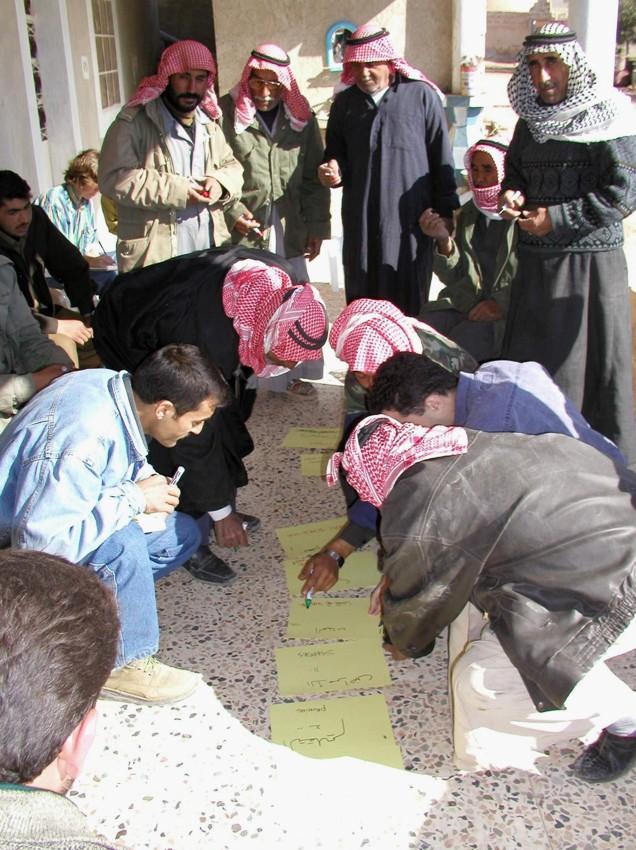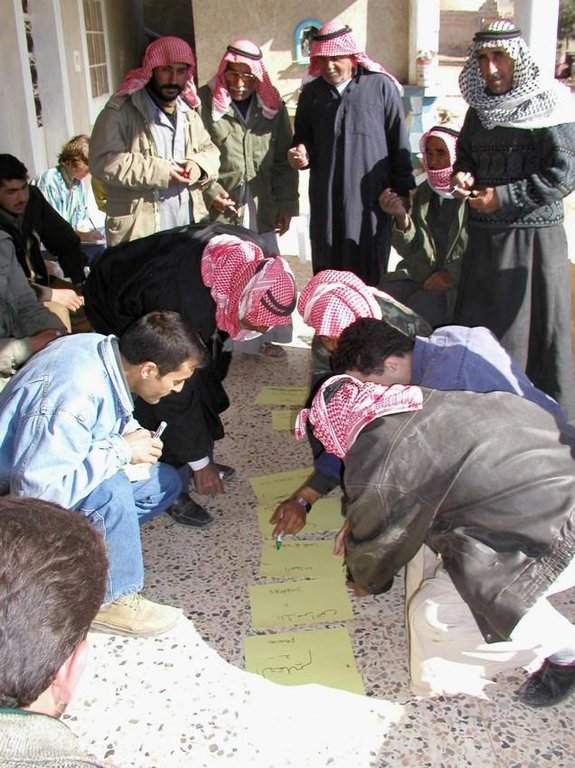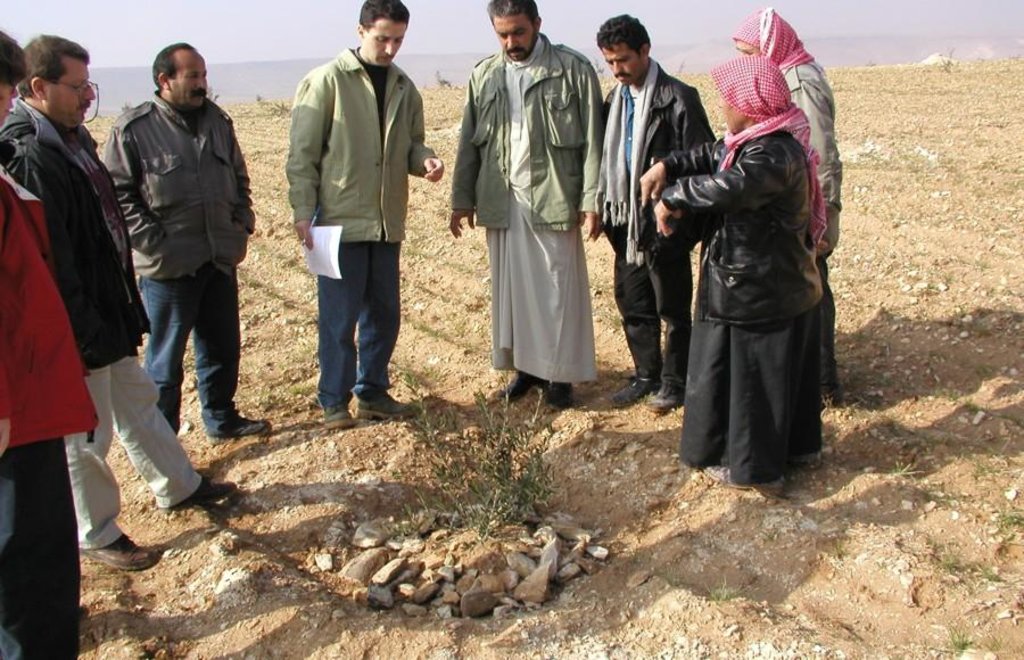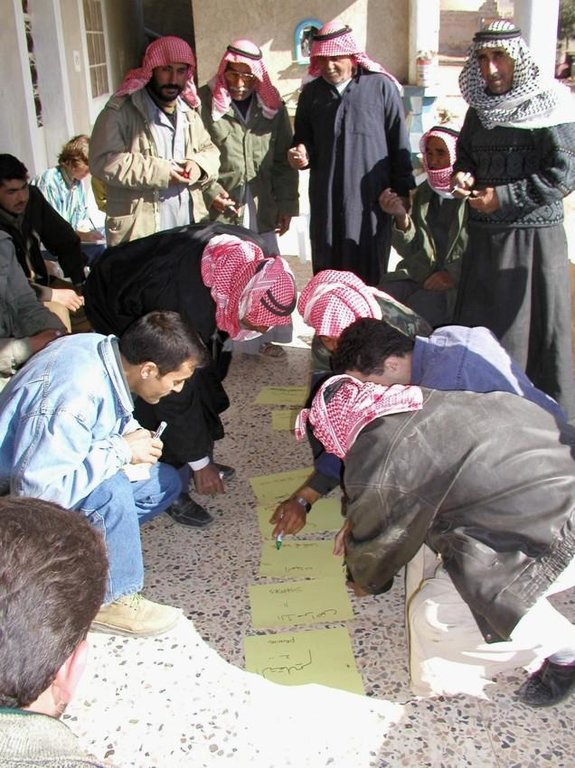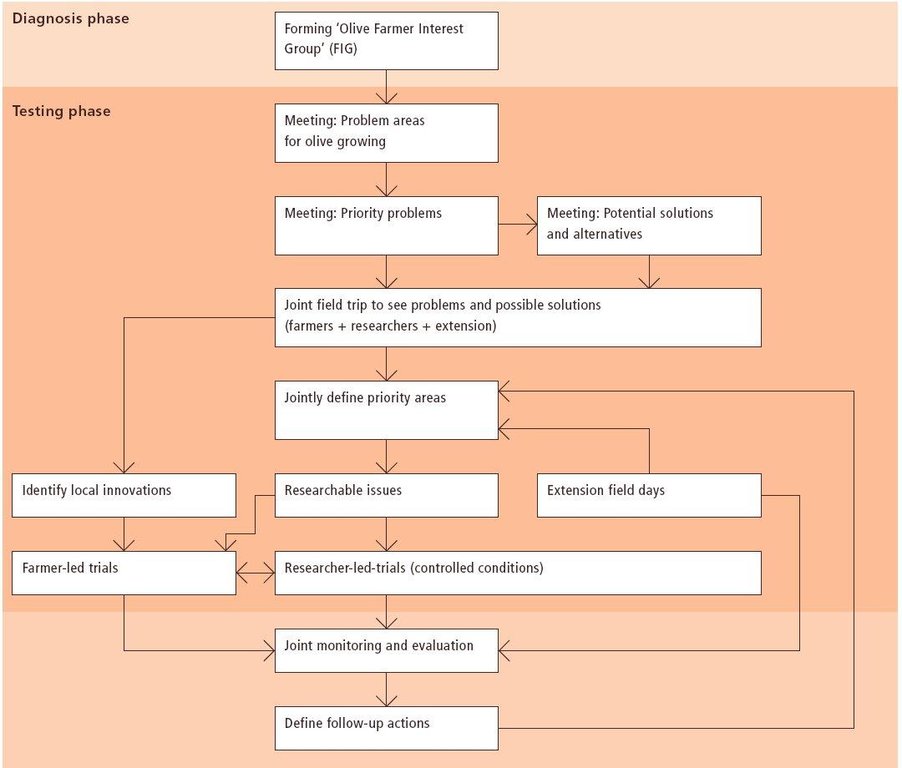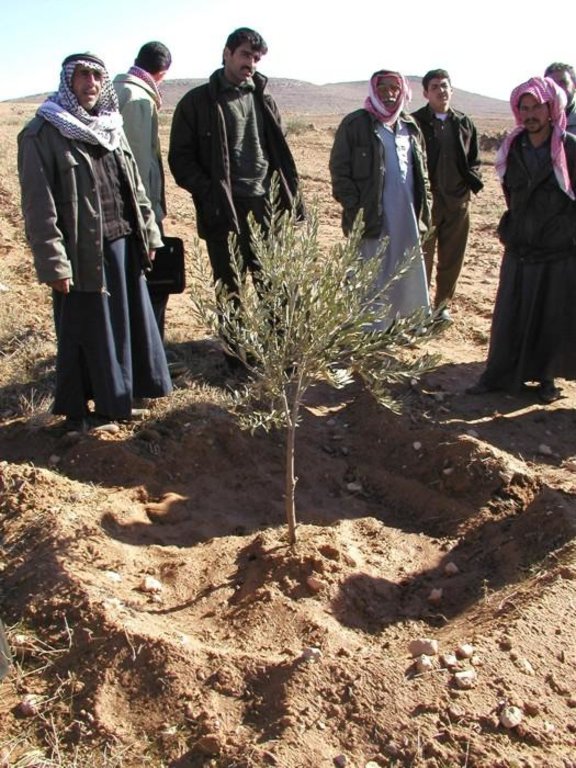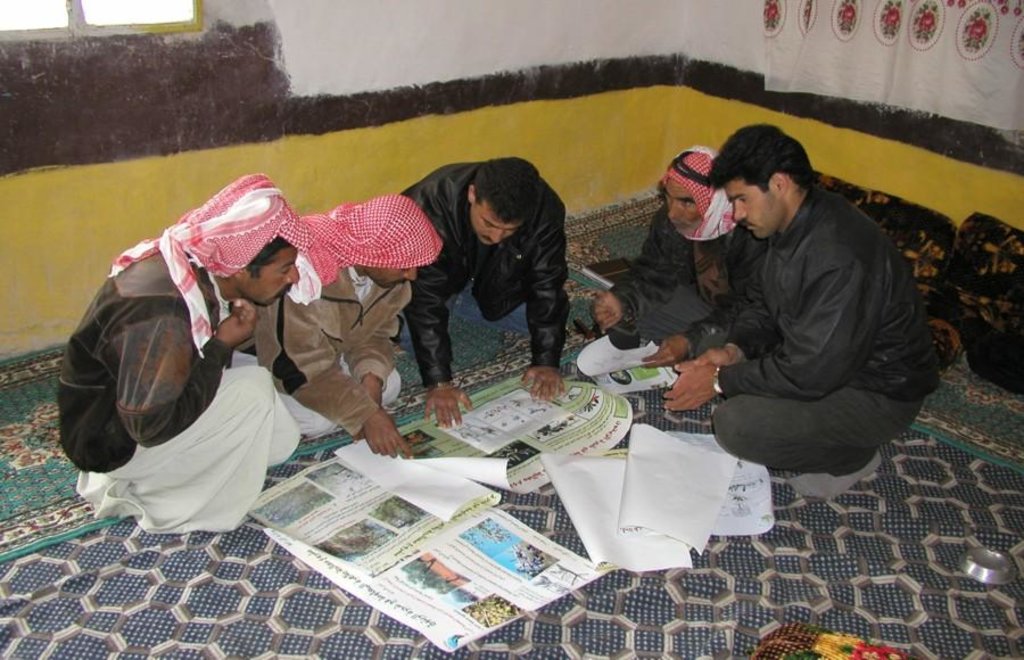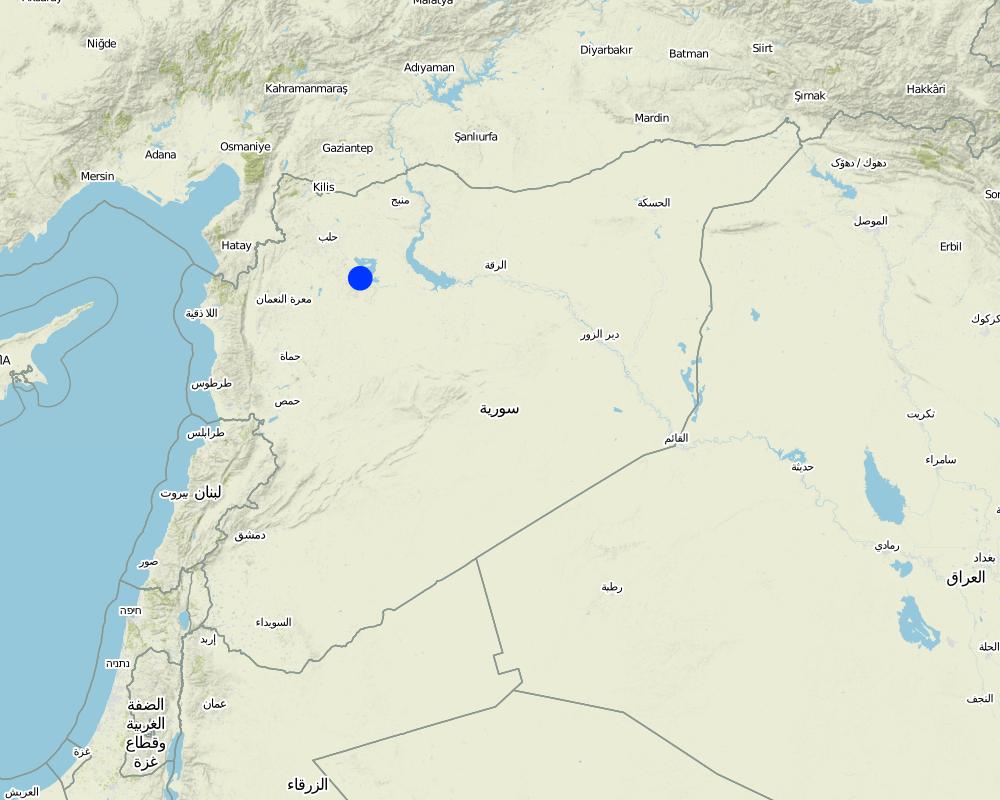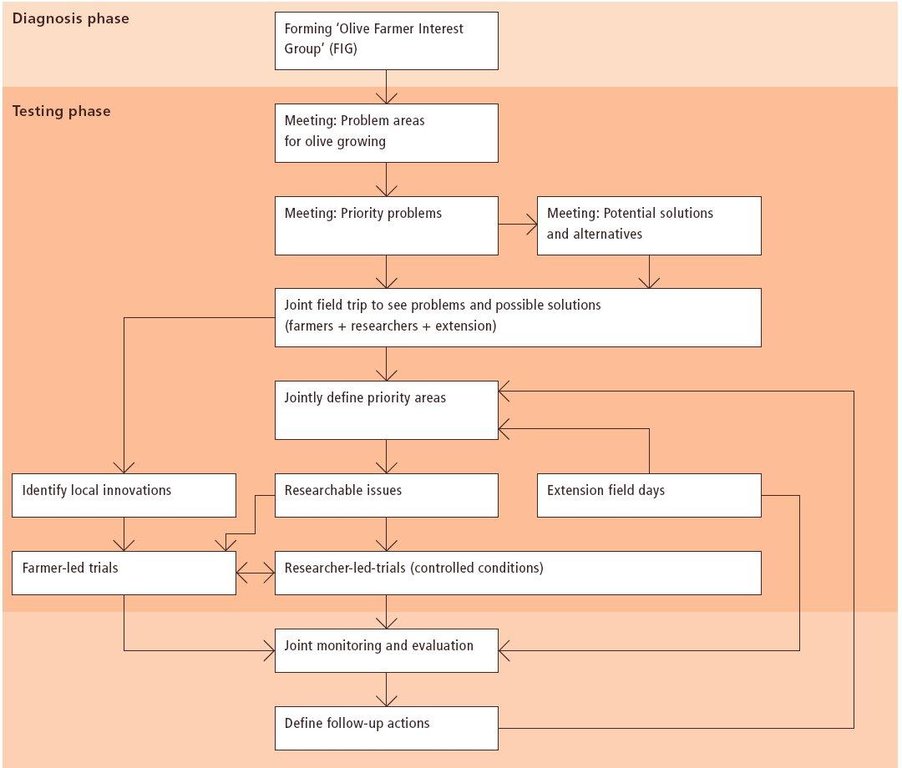Participatory technology development [Сирийская Арабская Республика]
- Создание:
- Обновить:
- Составитель: Francis Turkelboom
- Редактор: –
- Рецензенты: David Streiff, Deborah Niggli
approaches_2631 - Сирийская Арабская Республика
Просмотреть разделы
Развернуть все Свернуть все1. Общая информация
1.2 Контактные данные специалистов и организаций, участвующих в описании и оценке Подхода
Специалист по УЗП:
Tubeileh Ashraf
A.Tubeileh@cgiar.org
Сирийская Арабская Республика
Специалист по УЗП:
Bruggeman Adriana
The Cyprus Institute (CyI)
Название проекта, содействовавшего документированию/оценке Подхода (если применимо)
Book project: where the land is greener - Case Studies and Analysis of Soil and Water Conservation Initiatives Worldwide (where the land is greener)Название организации (-ий), содействовавших документированию/оценке Подхода (если применимо)
The Cyprus Institute (The Cyprus Institute) - Кипр1.3 Условия, регламентирующие использование собранных ВОКАТ данных
Составитель и ответственный/-ые специалист(-ы) согласны с условиями, регламентирующими использование собранных ВОКАТ данных:
Да
1.4 Ссылка (-и) на Анкету (-ы) по Технологиям УЗП
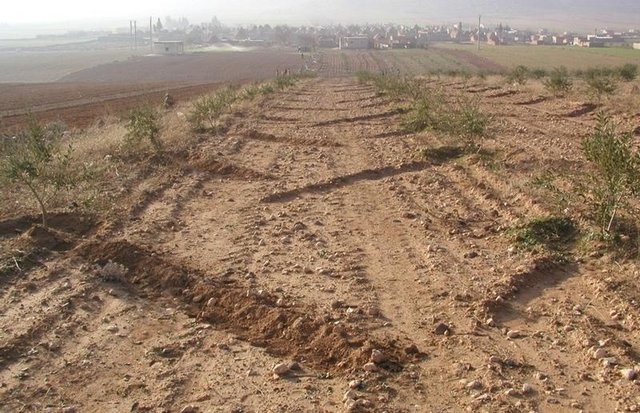
Сбор дождевой воды для оливковых деревьев [Сирийская Арабская Республика]
Сбор стока дождевой воды через ежегодную постройку микро-бассейнов в форме V на холмистых участках
- Составитель: Francis Turkelboom
2. Описание Подхода УЗП
2.1 Краткое описание Подхода
Participatory technology development, through close researcher-farmer interaction, for sustainable land management of olive orchards in dry marginal areas.
2.2 Подробное описание Подхода
Подробное описание Подхода:
Aims / objectives: The purpose of participatory technology development is to gain from the synergy between indigenous knowledge and scientific expertise. The specific objective in this case was to develop and test water and land management techniques in order to sustainably improve olive production in a semi-arid area, while ensuring that the techniques were well adapted to local farming practices. The approach consists of group meetings, joint field trips, identification of local innovations, extension days, monitoring of farmer practices, and researcher-controlled experiments. The approach consists of a cycle with three major stages: a diagnostic phase, a testing phase, followed by monitoring and evaluation. In this case study, farmers were invited based on their interest in growing olives. Participation throughout the learning cycle was completely voluntary: no material or financial incentives were used (although they expected them in the beginning of the process). The role of farmers was to identify priority problems and potential solutions, to test new technologies on their farms, and to evaluate their suitability. Farmers observed the research experiment with water harvesting, and then adapted the technology to their needs. As shown, they built V-shaped bunds around their olive trees to capture rainwater runoff, but - contrary to the researchers??? suggestion - they continued to plough the olive orchards, as this is their standard weed control practice. Weeds attract sheep, lead to fires and compete for water with the olives. This simple runoff harvesting system is well adapted to farmers??? objectives, and their modification -the up-and-down slope furrows created through ploughing - actually serves to increase the efficiency of the water harvesting. The system is now being monitored by researchers to assess its technical and economic efficiency.
Methods: Improved farmer-researcher interaction helps farmers learn about a useful basic technique from researchers, while researchers learn in turn about potential improvements to the technology from local innovators. A community facilitator of ICARDA (International Centre for Agricultural Research in Dry Areas) facilitated the group discussions, and the researchers were asked to be open-minded to new approaches while conducting and monitoring field trials. The approach was tested by an interdisciplinary team of ICARDA as part of the ???Khanasser Valley Integrated Research Site???. This project aimed to develop local-adapted options for agriculture in dry marginal areas alongside a generally applicable integrated approach for sustainable land management in these zones.
2.3 Фотографии, иллюстрирующие Подход
2.5 Страна/ регион/ место, где применялся Подход
Страна:
Сирийская Арабская Республика
Административная единица (Район/Область):
Khanasser Valley
Более точная привязка места:
NW Syria
Map
×2.7 Тип Подхода
- в рамках проекта/ программы
2.8 Каковы цели/ задачи Подхода
- design, test and disseminate alternative technologies adapted to local conditions - strengthen local knowledge of SWC measures - strengthen joint learning by farmers and researchers
The SLM Approach addressed the following problems: The lack of appropriate ways to develop sustainable technologies to remedy loss of runoff water and poor olive growth -in the context of low-input agriculture on gentle undulating land in water scarce areas with an absence of soil conservation measures.
2.9 Условия содействующие применению Технологии/ Технологий в рамках Подхода или затрудняющие его
Наличие/ доступность финансовых ресурсов и услуг
- затрудняют
Water harvesting is considered expensive due to labour cost.
Treatment through the SLM Approach: Identification of a low-cost water harvesting measure, which can be implemented during the off-season. Cost-benefit analysis.
Осведомленность в области УЗП, доступность технической поддержки
- затрудняют
Difficulty in tilling the land when water harvesting structures are in place.
Treatment through the SLM Approach: Integrating local innovations into the water harvesting system.
другие
- затрудняют
Uncertainty about appropriate size of micro-catchment area. Uncertainty about the amount of water harvested. Lack of technical expertise for olive crop husbandry in dry areas.
Treatment through the SLM Approach: Researcher-controlled research and carry out farmer field days, desseminate and elaborate extension leaflets as a help.
3. Участие и распределение ролей заинтересованных сторон
3.1 Заинтересованные стороны, участвующие в реализации Подхода и их роли
- местные землепользователи/ местные сообщества
Mainly men were involved, as most activities in olive orchards are managed by men. In addition, culturally bound gender segregation in public makes it difficult to organise gender-mixed meetings. Therefore, separate meetings were organised for women. In the case of one household, the de facto partner was a woman who takes most of the orchard-related decisions and does the work herself.
- researchers
3.2 Участие местных землепользователей/ местных сообществ на разных стадиях реализации Подхода
| Участие местных землепользователей/ местных сообществ | Перечислите участников и опишите их вовлеченность | |
|---|---|---|
| инициирование/ мотивация | пассивное | public meetings |
| планирование | интерактивное | public meetings |
| выполнение | интерактивное | completely conducted by land-users |
| мониторинг/ оценка | интерактивное | interviews/questionnaires, public meetings; |
| Research | интерактивное | on-farm; farmer experiments and controlled on-farm experiments |
3.3 Схема реализации (если имеется)
3.4 Принятие решений по выбору Технологии/ Технологий УЗП
Укажите, кто принимал решение по выбору применяемой Технологии/ Технологий:
- в основном землепользователи при поддержке специалистов по УЗП
Поясните:
Decisions on the method of implementing the SLM Technology were made by mainly by land users supported by SLM specialists
4. Техническая поддержка, повышение компетенций и управление знаниями
4.1 Повышение компетенций/ обучение
Проводилось ли обучение землепользователей/ других заинтересованных лиц?
Да
Тип обучения:
- в ходе работы
- обмен опытом между фермерами
- общие собрания
Рассматриваемые темы:
Demand-driven training of olive husbandry techniques (eg pruning, grafting, pest management)
4.2 Консультационные услуги
Есть ли у землепользователей возможность получать консультации?
Да
Укажите, где именно оказываются консультационные услуги:
- на полях землепользователей
Описание/ комментарий:
Farmer-to-farmer extension; Key elements: innovative farmers showed their technique to other olive farmers during farm visits
4.3 Институциональная (организационная) поддержка
В ходе реализации Подхода были ли организованы новые институциональные структуры или поддержаны уже существующие?
- нет
4.4 Мониторинг и оценка
Являются ли мониторинг и оценка частью Подхода?
Да
Комментарии:
bio-physical aspects were regular monitored by 0 through observations; indicators: soil moisture
bio-physical aspects were regular monitored by 0 through measurements; indicators: water harvesting structures and management measures
technical aspects were regular monitored by None through observations; indicators: perceptions of the technology
socio-cultural aspects were ad hoc monitored by None through measurements; indicators: cost and benefits
economic / production aspects were ad hoc monitored by None through measurements; indicators: annual field survey using GPS
area treated aspects were regular monitored by None through measurements; indicators: annual farmer interview
no. of land users involved aspects were regular monitored by None through observations; indicators: None
There were few changes in the Approach as a result of monitoring and evaluation: There were few changes: interest in the farmers??? orchards and questions about the technology stimulated some other farmers to apply water harvesting.
4.5 Научные исследования
Были ли научные исследования частью Подхода?
Да
Укажите темы исследований:
- социология
- экономика / маркетинг
- технология
Напишите подробнее и назовите тех, кто выполнял исследования:
Research was an important part of this approach. Technical and socio-economic topics were treated as follows: (1) Researcher-controlled on-farm experiments: this helped evaluate the impact of water harvesting design on the amount of water harvested and the olive crop response. (2) Monitoring of farmer-managed trials: to evaluate the performance of water harvesting under on-farm conditions. (3) Cos
5. Финансирование и внешняя материальная поддержка
5.1 Годовой бюджет мероприятий по УЗП в рамках Подхода
Комментарий (например, основные источники финансирования/ ключевые доноры):
Approach costs were met by the following donors: government (national - ICARDA, Atomic Energy Commission Syria): 10.0%; international non-government (BMZ (Germany)): 50.0%; local community / land user(s) (-): 40.0%
5.2 Финансирование и внешняя материальная поддержка, предоставляемая землепользователям
Предоставлялась ли землепользователям финансовая/ материальная поддержка для применения Технологии /Технологий?
Да
5.3 Субсидии на отдельные затраты (включая оплату труда)
Если труд землепользователя был существенным вкладом, укажите, был ли этот вклад:
- добровольный
5.4 Кредитование
Предоставлялись ли в рамках Подхода кредиты на мероприятия УЗП?
Нет
6. Анализ влияния и заключительные положения
6.1 Влияние Подхода
Сумел ли Подход помочь землепользователям внедрить и поддерживать технологии УЗП?
- Нет
- Да, немного
- Да, умеренно
- Да, существенно
Adoption of the furrow-enhanced runoff-water harvesting technique resulted in a concentration of scarce rainwater and nutrients in the basins around the olive trees. The consequence is a significant reduction of soil loss and runoff at the field level.
Did other land users / projects adopt the Approach?
- Нет
- Да, немного
- Да, умеренно
- Да, существенно
This approach is now being applied in other ICARDA-coordinated projects in the region.
6.3 Долгосрочная устойчивость мероприятий в рамках Подхода
Могут ли землепользователи самостоятельно (без внешней поддержки) продолжать применение того, что было реализовано в рамках Подхода?
- да
Если да, опишите как:
The complete PTD process/learning cycle needs outsider facilitation, but lack of outsiders will not stop farmers experimenting further by themselves. In terms of the technology itself, farmers can continue independently with water harvesting structures, as the system is very simple and relatively cheap.
6.4 Сильные стороны/ преимущества Подхода
| Сильные стороны/ преимущества/ возможности по мнению составителя или других ключевых специалистов |
|---|
| Engagement of researchers with local innovators and thus interaction between scientific and indigenous knowledge (How to sustain/ enhance this strength: This approach can only be sustained if it is mainstreamed into national research and extension services.) |
| Attitude changes by researchers about farmers??? knowledge (How to sustain/ enhance this strength: Ditto.) |
| Building on local knowledge (How to sustain/ enhance this strength: Ditto.) |
| Capacity building of both land users and researchers (How to sustain/ enhance this strength: Ditto.) |
| Demand-driven technologies (How to sustain/ enhance this strength: Ditto.) |
6.5 Слабые стороны/ недостатки Подхода и пути их преодоления
| Слабые стороны/ недостатки/ риски по мнению составителя или ответственных специалистов | Возможные пути их преодоления/снижения? |
|---|---|
| Time demanding | Less time needed after the first experience. |
| Appropriate facilitating skills required | Mainstreaming facilitation skills. |
7. Справочные материалы и ссылки
7.1 Методы сбора/источники информации
- выезды на места, полевые обследования
- опросы землепользователей
7.2 Ссылки на опубликованные материалы
Название, автор, год публикации, ISBN:
Tubeileh A and Turkelboom F (2004) Participatory research on water and soil management with olive growers in the Khanasservan Veldhuizen L, Waters-Bayer A, Abd de Zeeuw H (1997) Developing technology with farmers:
Ссылки и модули
Развернуть все Свернуть всеСсылки

Сбор дождевой воды для оливковых деревьев [Сирийская Арабская Республика]
Сбор стока дождевой воды через ежегодную постройку микро-бассейнов в форме V на холмистых участках
- Составитель: Francis Turkelboom
Модули
Нет модулей


